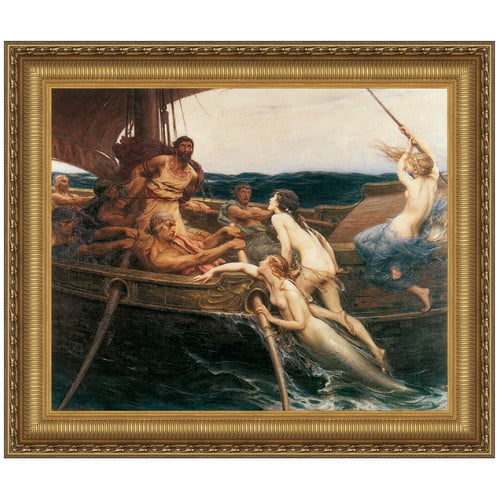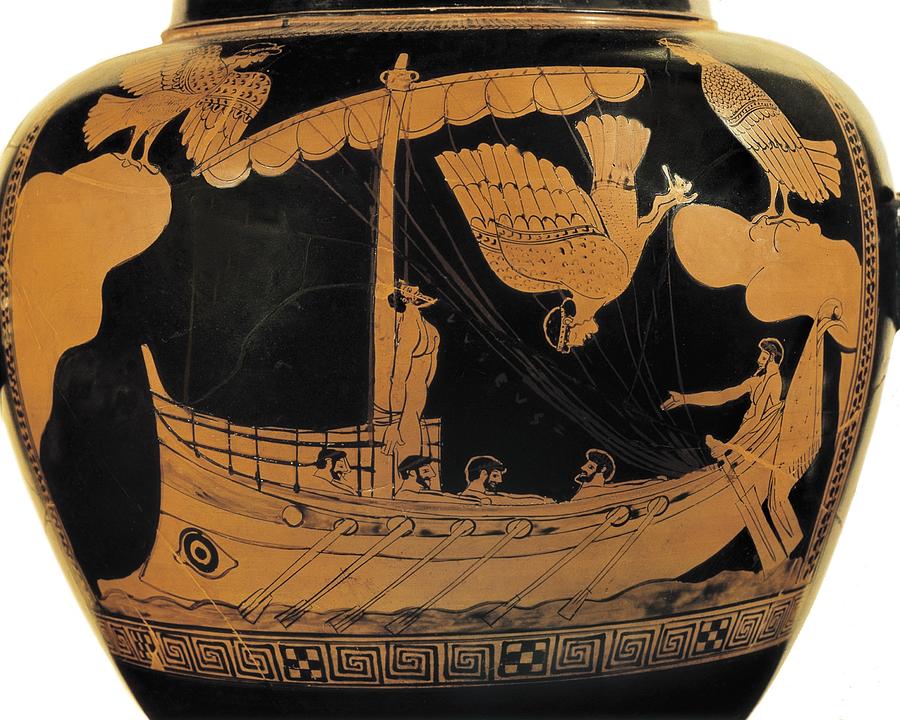

1) 1 was purchased for the National Gallery of Victoria by Sir Hubert Herkomer, for £1200, in June 1891. Ulysses and the Sirens, 1891, by John William Waterhouse (fig. The Pictorial: Academy and Salon Pictures of 1891 (c.1891) Ulysses was enchanted with their delicious and beguiling song, and struggled to extricate himself from his bonds, but Eurylochus and Perimedes wound the coil of rope around him and the sturdy rowers applied themselves with all their might and main to their oars a fresh breeze filled the swelling sail and they shot past the Sirens’ Isle, and so escaped peril. He had previously taken the precaution to stop their ears with wax, so that they might be deaf to the alluring voices of the winged sorceresses, whose melodious throats poured forth Forewarned by Circe that he must shun ‘the heavenly-singing Sirens’ harmony’, Ulysses caused himself to be strapped securely to the mast of his vessel, and ordered his crew on no account to release him, however earnestly he might afterwards importune them to do so. Mr Waterhouse selected for illustration the well-known passage in the twelfth book of the ‘Odyssey’ of Homer, in which the poet has described the passage of the wanderer’s vessel through the Strait of Messina, with Scylla on the one side and Charybdis on the other. Waterhouse’s images of Circe, sirens and sorceresses raise a number of questions. Would you like to support 3 minutos de arte? Our project.This dramatic painting illustrates an episode from the journeys of the Greek hero Odysseus (in Latin, Ulysses) told in the poet Homer’s Odyssey in which the infamous Sirens lured unwary sailors towards perilous rocks and their doom by singing in the most enchanting manner. You can also find more material using the search engine. Stories Behind Works of Art: The Arnolfini Portrait, Jan van Eyck.įundamental Paintings to Understand the History of Painting: The Burial of the Count of Orgaz, El Greco. Stories Behind Works of Art: The Birth of Venus, Botticelli. Stories behind the Works of Art: Monet and the Rouen Cathedral. The siren with a fish tail, a representation from other mythologies, started to prevail as from the Middle Age. Many times they were associated to funerary matters -there is no agreement about the reasons-but they seemed to be related to the world of the dead. Before Homer’s work -the first appearance of the Sirens in literature- we can see sirens with a bird body represented in ceramic vases, urns, figurines. Greek tradition represented them that way. Why do the sirens of Waterhouse have a bird body? Ulysses and his sailors get past the island of the sirens without crashing and the odyssey continues. This way he is able to listen to the deadly singing without reacting when under the spell. Thus, as it is well known, he instructs the sailors to fill their ears with wax and have him tied to the mast. Ulysses has to avoid the situation, but his curiosity tempts him to know that irresistible singing. A perverse seduction that leads to death.Īn interesting detail: the mythical island would be in the Mediterranean, opposite the Sorrento, which would coincide with the Capri Island. With their singing they attract sailors in an irresistible and hypnotic way, and the mariners end by crashing their ships against the rocks of the island.

The sirens are those mythological creatures -that we know as half fish, half woman- who have a very seductive voice.


They have to go around the island of the Sirens.
The sirens and ulysses how to#
He spends a year with his crew in the island of the enchantress Circe, and finally she tells him how to return to Ithaca.
The sirens and ulysses full#
That is why a series of adventures or of events full of adversities is called an odyssey. In the Odyssey -named after its protagonist, Odysseus, the Greek name which in English is Ulysses- Homer tells the adventures Ulysses goes through to return to his kingdom, Ithaca, after the war of Troy. What maybe curious in the work of Waterhouse is that the sirens are not represented as we are used to seeing them. The story of Ulysses and the singing of the Sirens is still a very popular myth and may be it is not necessary to tell it again. How is 3 minutos de arte supported?ĭid you know that Sirens were not always seen as half woman and half fish? We could make this publication thanks to small donations.


 0 kommentar(er)
0 kommentar(er)
